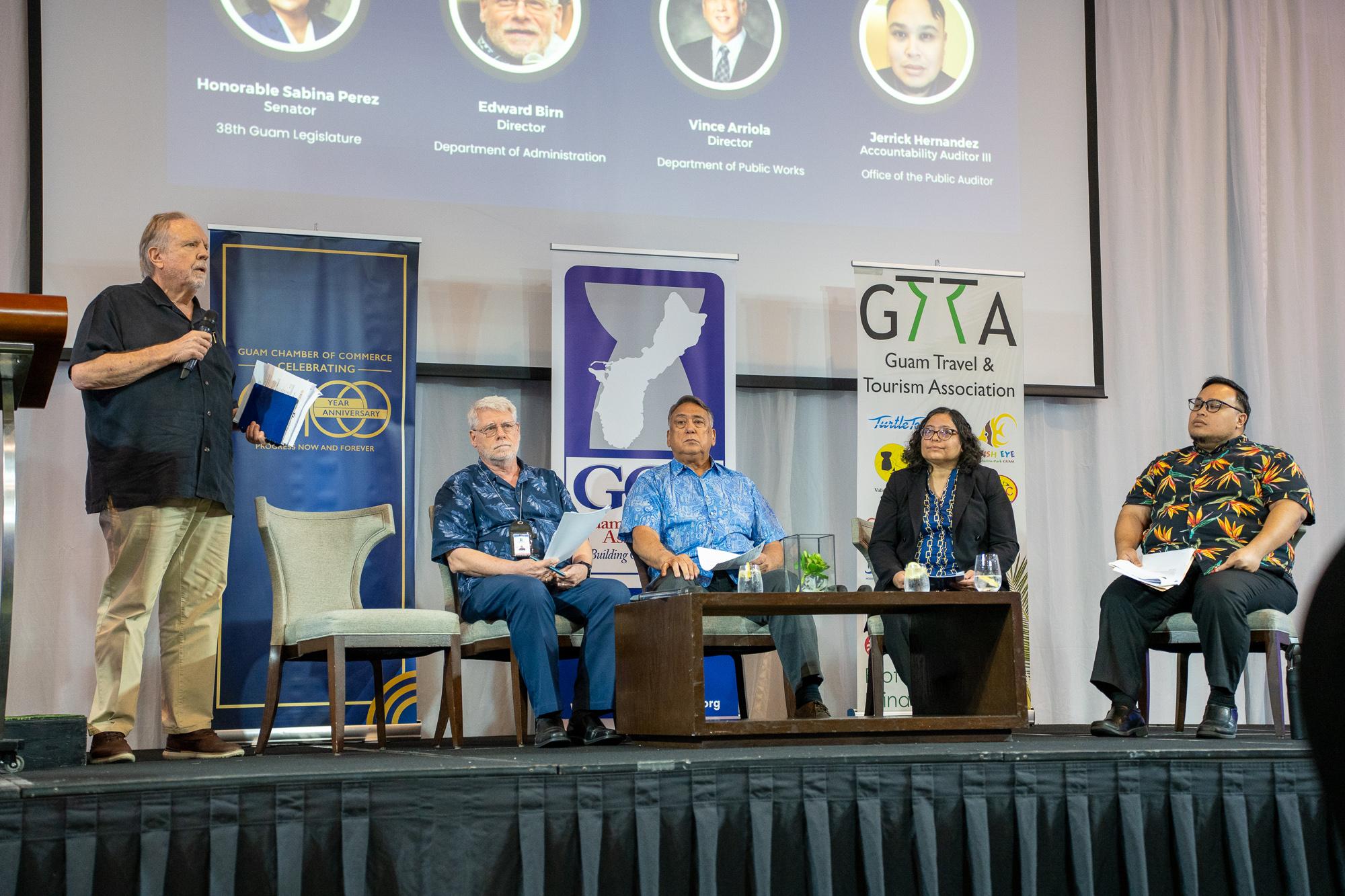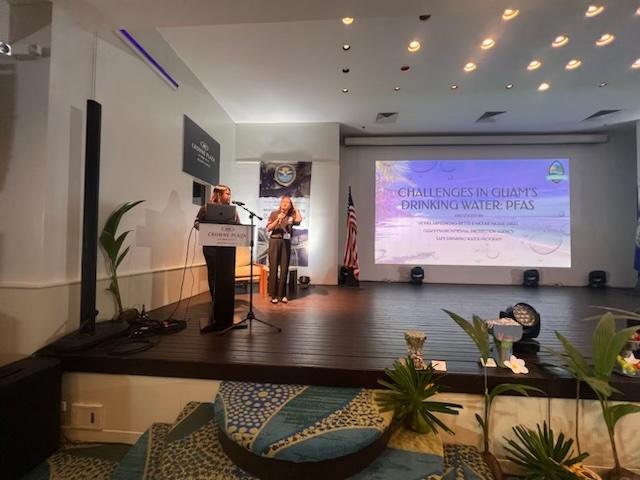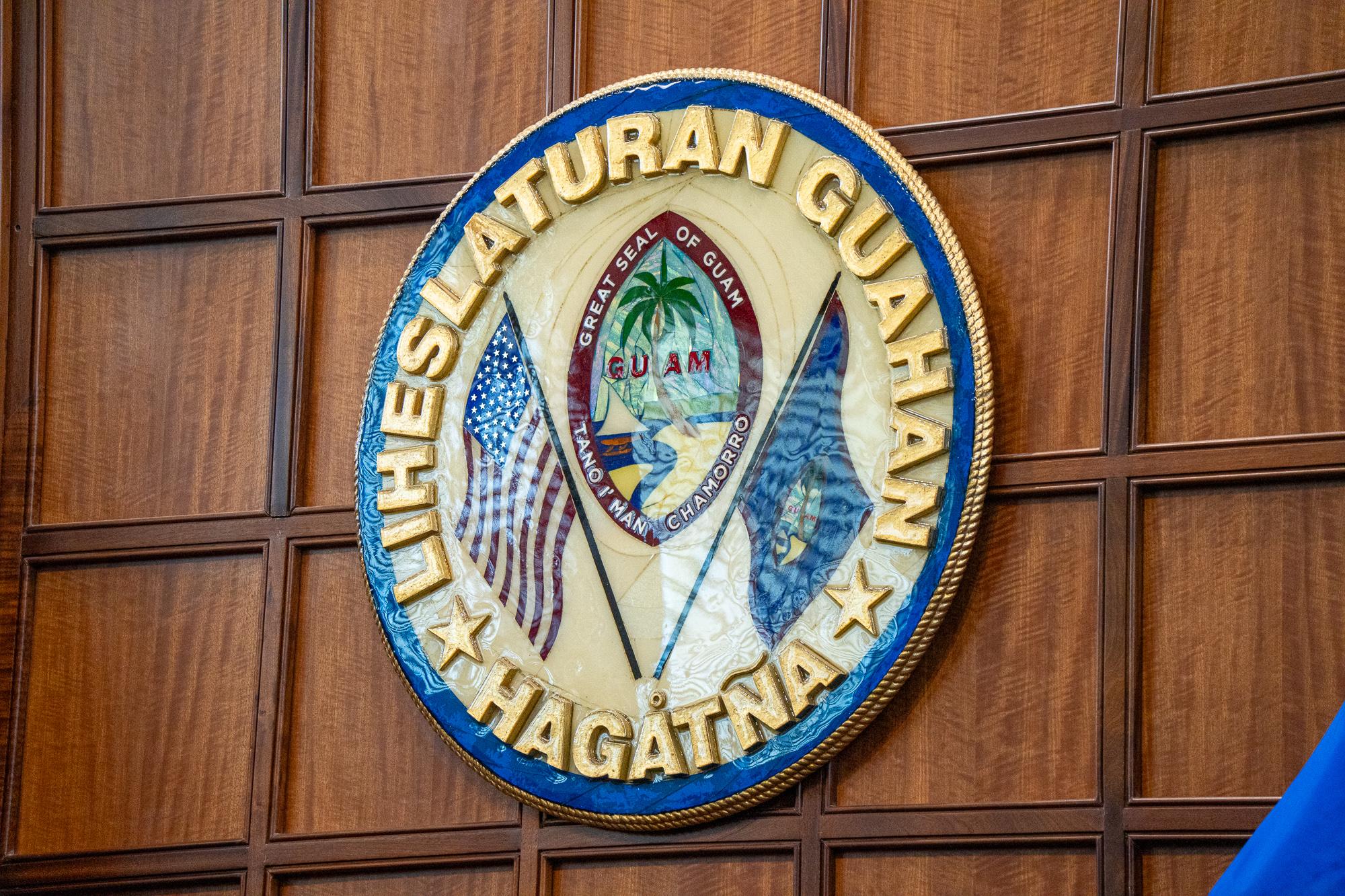BY PAULY SUBA
Journal Staff
Guam’s government leaders and agency heads called for modernizing the island’s outdated procurement laws, but also pointed to key successes showing how careful planning and teamwork can make even a complex system work.
The calls came during the Government Procurement Summit, on June 12, held at the Hyatt Regency Guam and organized by the Guam Chamber of Commerce, Guam Contractors Association, and Guam Travel & Tourism Association. Governor Lourdes A. Leon Guerrero and Speaker Frank Blas Jr. of the 38th Guam Legislature gave opening remarks.
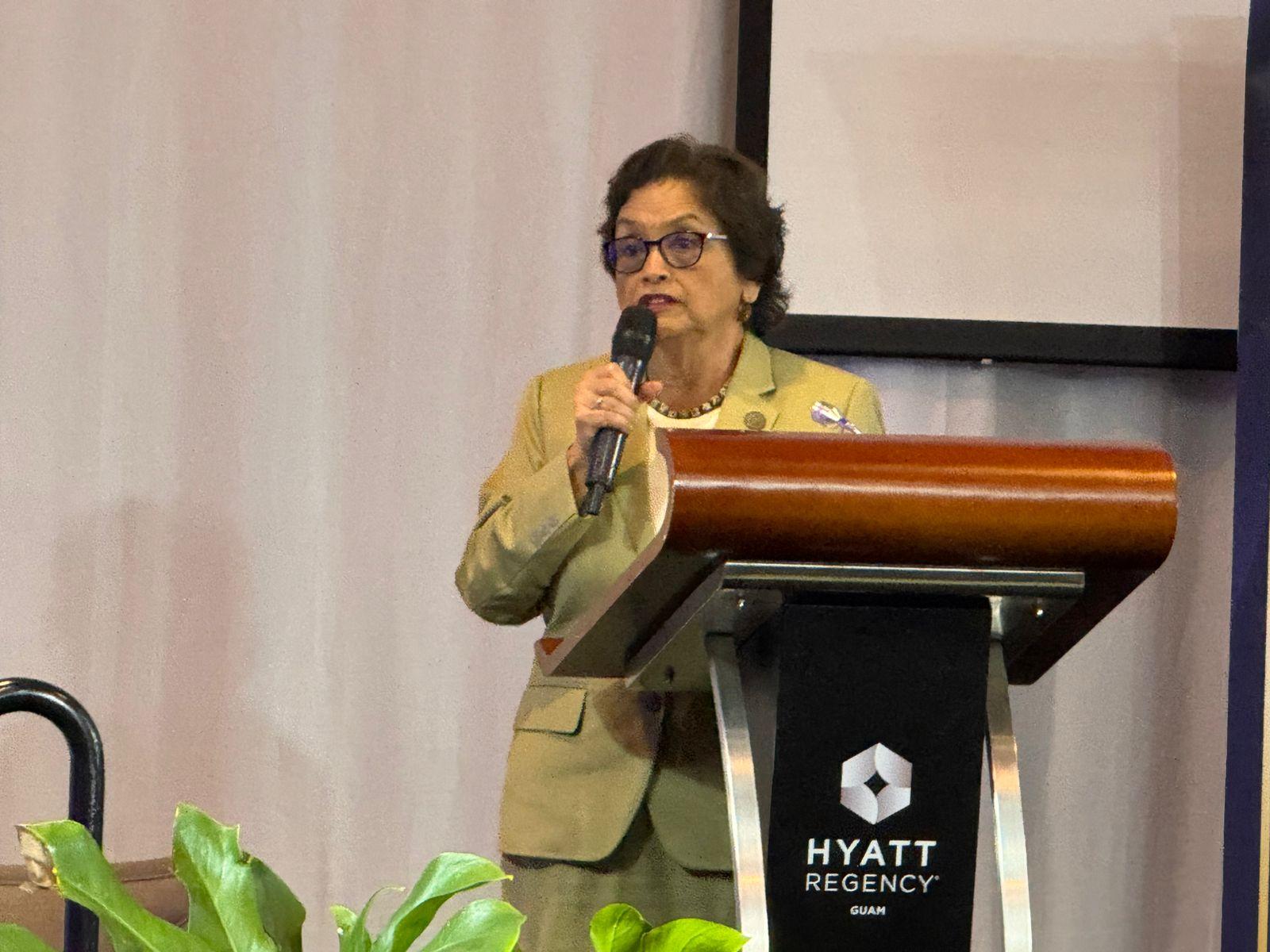
Leon Guerrero said procurement rules based on a 1979 model code no longer fit today’s technology-driven and fast-changing marketplace. “Our laws and regulations have not met up with the changing challenges,” she told attendees. “It’s hard to move forward if we plant our feet in the past.”
She announced plans to convene a Procurement Reform Working Group to recommend changes, including raising outdated small purchase thresholds and revising automatic stay rules that delay projects during bid protests. “Our people want efficiency. They want effectiveness. And sometimes laws do hinder us in doing that,” she said.
Blas said legislative leaders are ready to help modernize procurement laws but emphasized the need for community input. “I’m going to be a sponge and soak up all of your recommendations and all of the issues,” he told the audience. “At the end of the day, you can help us to decide on moving this very important issue forward.”
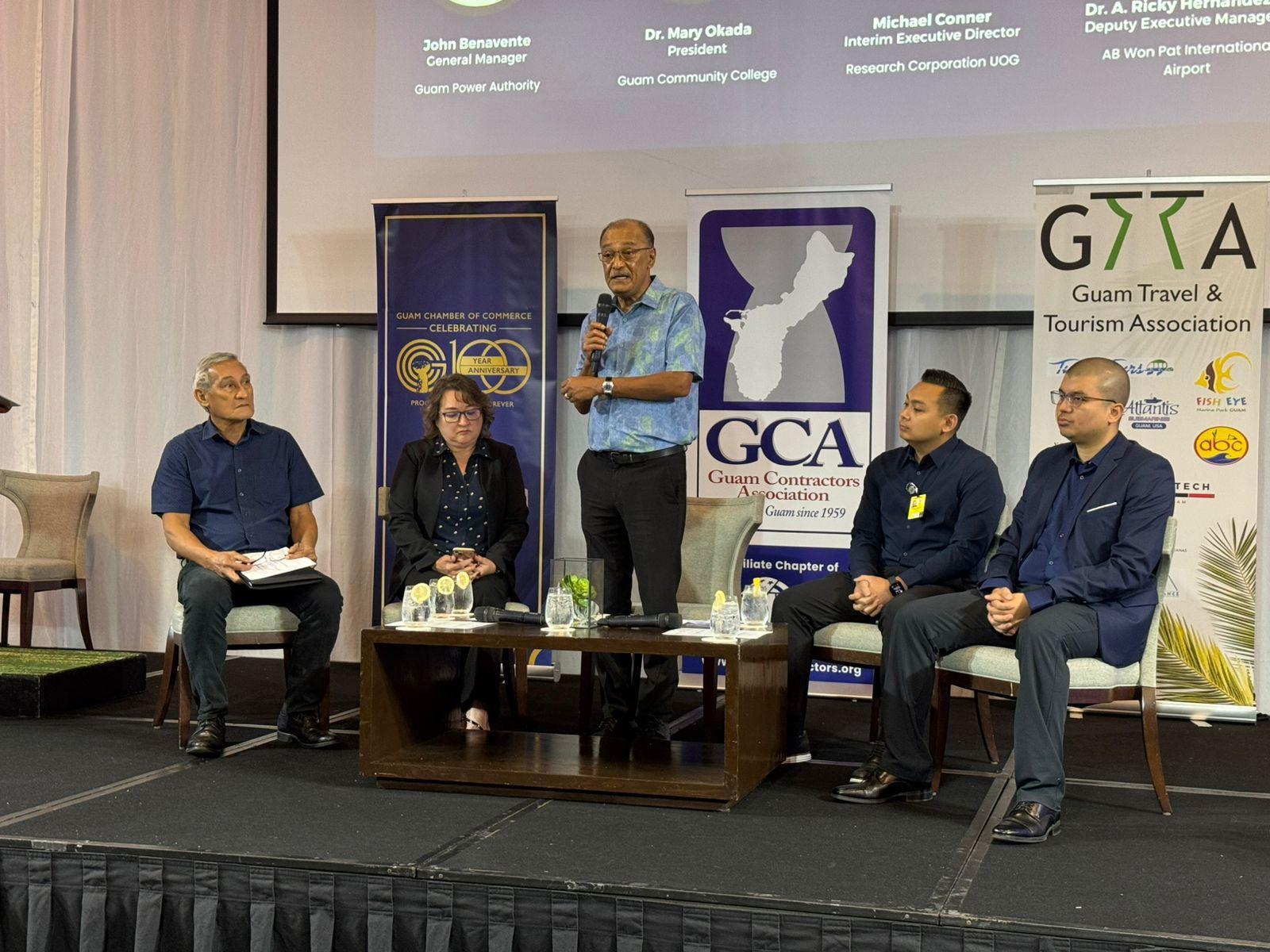
One of the summit’s key sessions, moderated by Clifford Guzman of the Guam Chamber of Commerce, brought together four agency leaders to share what is working in their organizations’ procurement practices.
John Benavente, general manager of Guam Power Authority manages over $400 million in procurement annually, and about 80% of its revenue has developed internal expertise to navigate a complex system. While the utility faces challenges such as costly delays from bid protests and one-size-fits-all rules, Benavente said GPA’s procurement team, supported by in-house legal counsel and extensive training, consistently delivers.
A recent success was the procurement of a major 132-megawatt renewable energy and battery storage project. “We did it within the current process, and while it took two years, we ensured compliance and transparency,” Benavente said. He stressed that GPA is eager to work on reforms to help deliver services more efficiently to ratepayers.
Dr. Mary Okada, president of the Guam Community College highlighted GCC’s strong track record in managing construction procurement, which has transformed the campus since 2007. “We’ve done it really well,” she said. “You can’t do it last minute — you really have to plan.”
GCC uses a collaborative, decentralized process, bringing together end users, architects, and procurement staff from the start. Okada also stressed leveraging multiple funding sources, particularly federal grants, to avoid delays and maximize project outcomes. “If we sit and wait for one funding source, we’d still be waiting for our first building to be built,” she said.
Dr. Ricky Hernandez, deputy executive director of A.B. Won Pat International Airport Authority emphasized the importance of planning and flexibility in managing the airport’s capital improvement projects, which total over $110 million in the past three years.
To secure and deploy federal funds quickly, the airport works closely with the Federal Aviation Administration and designs projects in phases, enabling rapid response to available grant opportunities. A prime example is the ongoing $41 million terminal apron project. “We’ve been able to overcome challenges through internal teamwork, including procurement, legal, and operations staff to avoid losing critical federal funding,” Hernandez said.
Michael Conner, interim executive director of Research Corporation of the University of Guam showcased RCUOG’s streamlined procurement model, which features higher thresholds and faster processing times than many GovGuam agencies. “Sometimes we can spit out a purchase order as quick as 30 minutes if needed,” he said.
RCUOG’s small team handles about 1,000 purchase orders annually, supporting short-term grant-funded research that requires agility. “We’re very efficient because we have to be,” Conner said, adding that staff cross-training, leadership, and a flexible legal framework are key factors. He encouraged other agencies to look to RCUOG as a potential model for procurement reform.
Throughout the discussion, panelists emphasized that while Guam’s procurement laws need updating, success is still possible with careful planning, teamwork, and a focus on mission outcomes.
“Together we can push Guam’s procurement environment into the future, nurture economic growth, and elevate the standard of services we provide to our communities,” Leon Guerrero said. mbj















